| Author |
Message |
 |
|
|
 |
|
Advert
|
Forum adverts like this one are shown to any user who is not logged in. Join us by filling out a tiny 3 field form and you will get your own, free, dakka user account which gives a good range of benefits to you:
- No adverts like this in the forums anymore.
- Times and dates in your local timezone.
- Full tracking of what you have read so you can skip to your first unread post, easily see what has changed since you last logged in, and easily see what is new at a glance.
- Email notifications for threads you want to watch closely.
- Being a part of the oldest wargaming community on the net.
If you are already a member then feel free to login now. |
|
 |
![[Post New]](/s/i/i.gif) 2022/12/06 23:20:36
Subject: Warhammer The Old World
|
 |

Secret Force Behind the Rise of the Tau
USA
|
Commissar von Toussaint wrote: LordofHats wrote: LordofHats wrote:
To be fair, the average living experience of 99% of humanity did not significantly change much at all between 5000 BC and 16-1700 AD. Farmers, laborers, and craftsmen generally lived more or less the same basic life across that entire period. It's really only in the early modern period when literacy started rising and economics began advancing a middle class that daily life and living really started to transform for the typical person.
In his History of the English-Speaking Peoples, Winston Churchill observed that the standard of living achieved in Roman Britain would not be exceeded until the Victorian era.
The Romans were able to cultivate grapes, their villas had central heating, running water, excellent sanitation, etc.
Another issue is that we don't know just how much technology was lost over time.
That has little to do with the Romans or anything sophisticated.
That's all about climate. The great eruption of El Chichon in 540 had a radical impact on global weather and temperature patterns (amplified by an even earlier eruption in the 4th century I'm not sure I'm remembering right?) and began a global cooling period that would culminate in the Little Ice Age in the 14th to 19th centuries (notice the time scale?). People in Britain didn't magically forget how to grow grapes (that idea itself is silly when you think about it). Weather patterns made it impossible. Shifts in population and weather made the larger Roman cities impractical, plus the arrival of the Angles and the Saxons who established new population centers and political structures that also still had running water and heating. That gak never went away with Romans. That's a complete myth. What did go away was building things in concrete. Roman infrastructure wasn't that unique. It was just made from materials that last a long time and wasn't worth tearing down to build other things in.
And honestly, why people stopped building things in concrete is kind of its own story.
To be fair to Mr. Churchill, archeologists only started picking at this thread in the past 20 years. Some argue the entire Age of Migration can ultimately be connected back to the climate disruptions caused by the El Chichon eruption. Which is in the Americas by the way. Volcanos be fething it all up in Eruope in 540 >.> There's a pretty good book on this that goes heavy into it; Children of Ash and Elm: A History of the Vikings. Neil Price proposes the Viking Age itself can ultimately be traced to social and political changes caused by El Chichon. Great read, if a bit dry in some parts.
|
|
This message was edited 6 times. Last update was at 2022/12/06 23:35:45
|
|
|
 |
 |
![[Post New]](/s/i/i.gif) 2022/12/06 23:33:19
Subject: Warhammer The Old World
|
 |

Decrepit Dakkanaut
UK
|
Yeah, a lot of people forget that the Dark Ages meant more that there was less preserved material for study (or less had been found) than for the Roman period which came before. Hence a "dark" patch in history that was harder to study after a period that is honestly a lot easier to study it seems.
And yeah climate has always been a huge thing. I recall that the Azteks weren't defeated just by Spanish and smallpox, but also huge climatic shifts that destroyed their harvests. They were already broken and starved and damaged.
Same as the Native Americans in the north had gone through a massive collapse (though I forget the triggers for that one)
Of course it doesn't help that the Dark Ages get used in media a lot so many people have a skewed understanding. Though it always amazes me that Arthurian style fantasy and stories often tend to show a very civilized, advanced and developed setting; and yet that is also "dark ages"
|
|
|
|
 |
 |
![[Post New]](/s/i/i.gif) 2022/12/06 23:38:32
Subject: Warhammer The Old World
|
 |

Longtime Dakkanaut
|
 Overread wrote: Overread wrote:
And yeah climate has always been a huge thing. I recall that the Azteks weren't defeated just by Spanish and smallpox, but also huge climatic shifts that destroyed their harvests. They were already broken and starved and damaged.
The Aztecs were defeated because the Spanish were able to build a coalition of their enemies and overthrow them. It wasn't like 100 Spaniards with matchlocks did the deed. No, they had thousands of willing allies who wanted the Aztecs gone.
Setting aside the various theories (which realistically will never be resolved), the point is that there is no inherent reason for societies to experience technological advancement. If something works, they just keep doing that.
Thus, it's perfectly plausible that the Old World would get to matchlocks or even flintlocks and then stall out. It was "good enough."
|
|
|
|
 |
 |
![[Post New]](/s/i/i.gif) 2022/12/06 23:44:29
Subject: Warhammer The Old World
|
 |

Secret Force Behind the Rise of the Tau
USA
|
 Overread wrote: Overread wrote:Yeah, a lot of people forget that the Dark Ages meant more that there was less preserved material for study (or less had been found) than for the Roman period which came before. Hence a "dark" patch in history that was harder to study after a period that is honestly a lot easier to study it seems.
To be honest, there isn't that much less material.
The problem is the nature of what was being written shifted and there was a period in the late 6th and and 7th centuries where everyone in Western Europe was too busy fighting to keep track of everything. The records we have are quite numerous but they're contradictory as all hell. King Arthur is a great example even. There's at least a dozen historical, semi-historical, and quasi-historical figures mentioned in records about this period who have been proposed a historical basis for King Arthur. And we're not even sure how many of them were real, different names for the same guy/s, or were made up after the fact and added in by fanbois of early Arthurian Myth (there were people writing about Arthur and his Kingdom as early as the 8th century, this myth got up and started running fast).
What's notable of this period isn't a lack of records, but a lack of clarity in the records we have. Everyone was simply too busy warring to have time to record everything and what ended up being recorded comes at the end of a major period of cultural and linguistic development that makes figuring out who is talking about what and where and who a Gordian Knot of confusion.
I recall that the Azteks weren't defeated just by Spanish and smallpox, but also huge climatic shifts that destroyed their harvests. They were already broken and starved and damaged.
This has been proposed but I think the people proposing it are light on real evidence. By all accounts Central Mexico was doing pretty well when the Conquistadors arrived but said Conquistadors burned so much gak down it's possible they weren't. The Aztecs, Mixtecs, and the Maya kept paper records. Almost none survived the book burnings.
Though it always amazes me that Arthurian style fantasy and stories often tend to show a very civilized, advanced and developed setting; and yet that is also "dark ages"
It goes hand in hand with the romanticization of Arthur's Britan as a gleaming city on a hill in the wake of the Western Empire's collapse. Without a doubt, people living in the Roman world certainly thought they were living the end times, but I mean come on who wouldn't? Thing is they weren't the only people alive then and what was a cataclysm to the Western Roman domain was a swelling period of development and opportunity for others.
|
|
This message was edited 2 times. Last update was at 2022/12/06 23:46:37
|
|
|
 |
 |
![[Post New]](/s/i/i.gif) 2022/12/07 02:58:35
Subject: Warhammer The Old World
|
 |

Fixture of Dakka
|
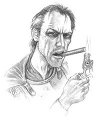 Dawnbringer wrote: Dawnbringer wrote:Danny76 wrote:As mentioned earlier.
Magic. Plays a huge role in advancement or not.
Also the other not mentioned, near constant war. In both settings that certainly stagnated things..
Which is some ways ironic, given the advancements driven by war in the real world.
Advancements driven by war in the MODERN world. In pre-industrial times during wartime you want your blacksmiths doing war production, not piddling around with some experimental armor or sword that may or may not work and takes a LOT more labor to do than the existing 'good enough' weapons and armor.
It's only with the advent of mass production and scientific investigation that you really start seeing innovation in response to wartime pressures.
|
CHAOS! PANIC! DISORDER!
My job here is done. |
|
|
 |
 |
![[Post New]](/s/i/i.gif) 2022/12/07 04:13:52
Subject: Warhammer The Old World
|
 |

Regular Dakkanaut
Aus
|
Do we really need a tedious drawn out debate on fantasy tropes in a news thread? I thought there had been a new GW post from the two new pages of thread here...
|
|
This message was edited 1 time. Last update was at 2022/12/07 04:14:01
|
|
|
 |
 |
![[Post New]](/s/i/i.gif) 2022/12/07 04:36:58
Subject: Warhammer The Old World
|
 |

Grizzled Space Wolves Great Wolf
|
 RustyNumber wrote: RustyNumber wrote:Do we really need a tedious drawn out debate on fantasy tropes in a news thread? I thought there had been a new GW post from the two new pages of thread here...
Yeah, I'm torn, I like to see people discussing WHFB stuff... but I kind of wish this thread would stop getting bumped without any actual news or rumours, and surely the last 2 pages of discussion doesn't belong in this thread. 
|
|
|
 |
 |
![[Post New]](/s/i/i.gif) 2022/12/07 04:37:12
Subject: Warhammer The Old World
|
 |

Executing Exarch
|
 Mr Morden wrote: Mr Morden wrote: kodos wrote: kodos wrote:and a very big difference, that makes this actual possible are modern fertilizers as living from the land you own was more difficult 100/150 years ago and "the land" not able to feed that many people
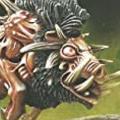 NinthMusketeer wrote: NinthMusketeer wrote:At the same time something like rifling or the functionality of a bullet shape would be incredibly easy to miss and have humans shrug, going 'well it's not Dwarfen, makes sense it doesn't work as well'.
which was also the main change in gun development in modern times, the shape and design of the bullet, which was a round ball for a very long time for several different reasons
while rifling was adopted very early, the first guns came up ~1350 the first rifling ~1450, but it took until ~1850 for modern bullets
one reason for this was that the principle of a rotation stabilised ammunition for better accuracy and range was already used for arrows, and that part is a little harder to miss as humans in the Empire would see that the arrows fired at them by elves look a little different to their own and if they used those to shoot back they would also fly better than their own (unlike a deformed bullet)
Also being able to build guns with interchangable parts on an industrial scale was not possible until the later 19th century IIRC?
IIRC, a gun manufacturer for the American Continental Congress put together an assembly-line system of sorts during the American War of Independence. But really, it's not that hard to set up an assembly line if someone comes up with the concept. You don't need machines. You just need a way to produce identical parts in bulk. The problem with gun production as you move further into the nineteenth century is fiddly parts that require high quality machine tooling (not available in the Empire).to make in large quantities. And from my admittedly limited understanding of gun technology, around the mid-nineteenth century is when that starts to become an issue. Coincidentally, elongated bullets and integrated cartridges are starting to draw attention at the same time, though they wouldn't see widespread use until after the American Civil War. The existence of those items allows rifling to start to become practical instead of just an excuse to foul your rifle barrel.
|
|
|
 |
 |
![[Post New]](/s/i/i.gif) 2022/12/07 05:53:33
Subject: Warhammer The Old World
|
 |

Longtime Dakkanaut
|
AllSeeingSkink wrote: RustyNumber wrote: RustyNumber wrote:Do we really need a tedious drawn out debate on fantasy tropes in a news thread? I thought there had been a new GW post from the two new pages of thread here...
Yeah, I'm torn, I like to see people discussing WHFB stuff... but I kind of wish this thread would stop getting bumped without any actual news or rumours, and surely the last 2 pages of discussion doesn't belong in this thread. 
If this thread was purely about news and rumours, it would be about a page and a half long. As is, it's near 200 pages of nothing, really.
|
|
This message was edited 1 time. Last update was at 2022/12/07 05:53:55
|
|
|
 |
 |
![[Post New]](/s/i/i.gif) 2022/12/07 07:07:24
Subject: Re:Warhammer The Old World
|
 |

Not as Good as a Minion
|
Eumerin wrote: Mr Morden wrote: Mr Morden wrote: kodos wrote: kodos wrote:and a very big difference, that makes this actual possible are modern fertilizers as living from the land you own was more difficult 100/150 years ago and "the land" not able to feed that many people
 NinthMusketeer wrote: NinthMusketeer wrote:At the same time something like rifling or the functionality of a bullet shape would be incredibly easy to miss and have humans shrug, going 'well it's not Dwarfen, makes sense it doesn't work as well'.
which was also the main change in gun development in modern times, the shape and design of the bullet, which was a round ball for a very long time for several different reasons
while rifling was adopted very early, the first guns came up ~1350 the first rifling ~1450, but it took until ~1850 for modern bullets
one reason for this was that the principle of a rotation stabilised ammunition for better accuracy and range was already used for arrows, and that part is a little harder to miss as humans in the Empire would see that the arrows fired at them by elves look a little different to their own and if they used those to shoot back they would also fly better than their own (unlike a deformed bullet)
Also being able to build guns with interchangable parts on an industrial scale was not possible until the later 19th century IIRC?
IIRC, a gun manufacturer for the American Continental Congress put together an assembly-line system of sorts during the American War of Independence. But really, it's not that hard to set up an assembly line if someone comes up with the concept. You don't need machines. You just need a way to produce identical parts in bulk. The problem with gun production as you move further into the nineteenth century is fiddly parts that require high quality machine tooling (not available in the Empire).to make in large quantities. And from my admittedly limited understanding of gun technology, around the mid-nineteenth century is when that starts to become an issue. Coincidentally, elongated bullets and integrated cartridges are starting to draw attention at the same time, though they wouldn't see widespread use until after the American Civil War. The existence of those items allows rifling to start to become practical instead of just an excuse to foul your rifle barrel.
machine tooling is a thing that changed a lot and not until that a standard production was possible as the margin of error by humans was too big for interchangeable parts
industrial scale mass production of guns, bullets and gunpowder was possible in different ways for a long time, but it was machine tooling that made it possible that the lock from 1 city perfectly fitted the frame from another city unlike before were the gun needed to be assembled in the same factory or even by the same person to perfectly fit (which was also a reason why breach loading was not coming for mass-production until machine tooling was in use, because a closed barrel not perfectly fitting the wooden frame was not a big problem, while the breach not perfectly closing was)
it was not that it was not possible, but the less moving parts the more reliable and cheaper it was to produce
hence in the early days only commanders or elite units used wheellocks, simple because they need more experience to maintain and were much more expensive but also not available on mass production
the Flintlock was easier to mass produce but still not possible to exchange parts from one gun to another
and regarding bullets, elongated bullets were not used simply because the possibility to load the gun the wrong way in a hurry was considered not worth the advantage by militaries (early forms of elongated bullets were a thing in the 1500/1550 but never made it for military standards), same integrated cartridges were seen as too dangerous as they fired the primer could go off by falling soldiers and therefore needs to be stored on its own
it was not until the Minie Bullet/Lorenz Bullet came up in the 1850ies which allowed rifled guns to be loaded fast and add range and accuracy which made it worth the afford and convinced militaries to drop the round bullet
fun fact, a form of integrated paper cartridge (not in a modern sense, but for muzzle loading) was invented and used before the percussion cap was a thing, but seen as too dangerous and therefore dropped in favour of the cap later because the cap and the bullet needed to be stored in different bags
and yes, one driving point of developing machinery and engines was the lack of work force
every time there were enough skilled workers, development stagnated because there was simply no need to invent a machine that could do the work
also for military tactics and weapons, if there were enough soldiers to keep fighting the traditional way there was no need to develop something new, but if one side saw a disadvantage in menpower they started to try to get the technological advantage to make up for it
being the Greeks that fought the Persians using better weapons and armour because those were few against many, or French favouring the Crossbow over the Bow and why gunpowder handweapons took over because it was easier to get enough people trained to use them fast over needing years to be good with a Bow
but because the Greeks and Romans always had enough slave labour which was cheap, there was never the need to develop and expansive machine to replace this
if they would have run out of slaves or slaves became much more expensive than metals it might would have been different
going back to Warhammer, The Empire and the Dwarfs being the declining nations with the numerical disadvantage against Orcs, Skaven and Chaos are in need to get the better technology to make up for it, and a stagnation in development is not very reasonable
|
|
This message was edited 2 times. Last update was at 2022/12/07 07:10:34
Harry, bring this ring to Narnia or the Sith will take the Enterprise |
|
|
 |
 |
![[Post New]](/s/i/i.gif) 2022/12/08 12:12:13
Subject: Warhammer The Old World OT chat.
|
 |

[MOD]
Fixture of Dakka
|
This thread is now dedicated to OT chat about the new game, the actual news and rumours are here - https://www.dakkadakka.com/dakkaforum/posts/list/0/807983.page#11464074
|
On parle toujours mal quand on n'a rien à dire. |
|
|
 |
 |
![[Post New]](/s/i/i.gif) 2022/12/08 18:13:59
Subject: Warhammer The Old World OT chat.
|
 |

Battlefield Tourist
MN (Currently in WY)
|
How we interpret the past is a reflection of what is going on in the present.
For example, the Migration period focused a lot on war and conflict as militarism and nationalism was the order of the day these theories arose. Same with the Sea People and the Bronze Age collapse.
More modern theories focus a lot more on Climate Change. Lo and behold, Climate Change is a very modern concern too! Only now, are we looking at our own past based on it.
Interesting stuff really.
Now ON Topic: Since Warhammer was written using "classic" Great Man of History tropes they tend to focus on during the times it was originally fleshed out. It would be interesting if a more modern look at the Warhammer history would be influenced on how more modern historians look at history and how it is taught?
|
|
This message was edited 1 time. Last update was at 2022/12/08 18:16:08
Support Blood and Spectacles Publishing:
https://www.patreon.com/Bloodandspectaclespublishing |
|
|
 |
 |
![[Post New]](/s/i/i.gif) 2022/12/08 18:32:21
Subject: Warhammer The Old World OT chat.
|
 |

Legendary Master of the Chapter
|
“It was the decline in trade, not war, that forced the High Elves out of the Old World.”
|
|
|
|
 |
 |
![[Post New]](/s/i/i.gif) 2022/12/08 20:07:20
Subject: Re:Warhammer The Old World OT chat.
|
 |

Longtime Dakkanaut
Annandale, VA
|
Eumerin wrote:Mechanically, early guns shouldn't be that difficult to copy with the Empire's technology. The quality might not be quite the same as what the dwarves are making. But the basic mechanisms are easy to replicate if there's one available to study for even a short bit of time. These aren't steam tanks or flying machines that we're talking about. Issues would likely be focused on gunpowder quality, and building enough of them before the modern assembly line. Based on my admittedly limited understanding of firearms development, I think you could reach firearms technology of the early nineteenth century and still have that apply. It's not until the middle of that century (the Gatling gun -introduced in 1862 - is a decent though not absolute marker, imo) that you start to require a level of precision work unavailable in the Empire.
This is kind of my bread and butter so I'm going to ramble a bit.
Assembly lines weren't really a thing for gun-making until the 1800s, and the development of interchangeable parts didn't occur until the very end of the 1800s. Hand-fitting of factory parts was common even into the 1900s. Basically until the industrial revolution, guns were made one at a time in three major assemblies. A clock-maker would make the lock, a wood-carver would make the stock, and a gunsmith would cut the barrel and assemble the three parts with final fitting to make sure they match up.
So, flintlocks (the standard from the mid-1600s to the mid-1800s) should be doable with Empire technology, being essentially a replacement for the earlier matchlock, which was very simple (basically one or two levers and a clamp for a burning cord) but dangerous to operate in formation and sensitive to rain and humidity. However, flintlocks require the ability to produce precisely machined and complex parts as well as reliably tempered leaf springs, which requires a substantial industrial base, and more importantly the economic support for mass-production. The wheellock, snaphaunce, and doglock (all predecessors to the flintlock) existed side-by-side with the matchlock as they were more reliable and didn't require a match to be kept lit, which made them favorable to cavalry, but were too complex and expensive to mass-produce. The ultimate evolution of the flintlock was a simpler mechanism than the wheellock, but it took time to get there.
Given the technological sophistication of the Empire, matchlock or even flintlock actions seem entirely plausible to me. The question is really more a matter of how many they can build and how readily they can equip their armies. The standing armies and mercenary companies of the Thirty Years War (1618-1648) were staggeringly expensive to equip and maintain, and clearly the Empire isn't quite at that level given that they still readily field crossbows and irregular archers despite the presence of comparatively advanced technology like steam tanks. In the real world, there were viable repeating weapons like the Puckle Gun in the early 1700s and Girardoni air rifle in the late-1700s, but they amounted to little more than prototypes. So I'd agree that it's not about what the Empire can build; it's about what they can build in sufficient quantity to be militarily relevant, and durable enough to be militarily viable in an era where replacement parts had to be hand-made and hand-fitted.
That said- it's worth noting that while the firing mechanisms for firearms didn't change all that much on a practical level, improvements in metallurgy and bore-drilling allowed for incremental improvements in performance over time. Long guns in the 16th and early 17th centuries were broadly divided into arquebuses, which were light and easy to use, and muskets, which were 20-30lbs and required forked rests to fire but could pierce body armor to much greater range. By the late-1600s, improvements in ballistic performance from better steel and tighter bores allowed the two to converge into a single weapon.
The archetypical Empire handgun is really an arquebus, as the term handgun or handgonne refers to an earlier and more primitive weapon. It seems to be matchlock, wheellock, or flintlock depending on the artist or sculpt. But given that non-magical body armor is a viable thing in the setting, and crossbows still exist (with greater effective range, no less), we're looking at a weapon probably no more powerful than what existed circa 1475-1550 or so. Go back a hundred years technologically and the lock disappears (you fire by touching a lit match to the powder), go forward a hundred years and improvements to ballistics make them dominate the battlefield rather than serving as one arm among many. So despite the fundamental technologies of firearms not changing from the early 1400s to the early 1800s, the Empire handgun represents a transitional era, not a multi-century status quo.
And relevant to Easy E's point about looking at things through modern lenses, one of the major factors that drove the development of mass-produced standard-issue firearms was the rise of nationalism in the 1500s-1600s. Even early firearms were relatively complex to operate, requiring non-negligible training to fight with in formation. Their owners were responsible for manufacturing their own ammunition and maintaining their weapons, and trained arquebusiers and musketeers were well-paid and highly valued (along with equally well-trained pikemen). The need for professional soldiers led to the development of the mercenary system in the 1500s, and then in turn standing armies which required proto-industrial manufacturing to support. This centralization of technological development facilitated the improvements in metallurgy and machining that made firearms the overwhelmingly dominant weapon technology in a relatively short span of time.
But in a feudal society, it's easy to imagine fairly sophisticated firearms used by a small number of knights and their men-at-arms, while the greater levy still relies on technologically obsolete weapons. In this environment, the technological precursors to substantial improvement might be developed far more slowly if at all, and so the technological paradigm could settle into firearms being militarily relevant without becoming effective enough or numerous enough to dominate as they did IRL. You'd have essentially garage shop gunsmiths funded by local feudal lords producing small numbers of bespoke arquebuses, probably with a bias towards embellishment and quality rather than anything resembling mass-production, and that status quo could last indefinitely.
While the Empire isn't feudal, being pretty transparently based on the Holy Roman Empire and already having professional standing armies, its apparent love of Da Vinci-esque gonzo inventors could create similar stagnation. If those are the guys driving technological development in the Empire- siloed, focused on passion projects, unwilling to cooperate with one another, and more interested in technological marvels than mundane mass-production- then the Empire might have a handful of steam tanks and robot horses but still field armies armed with crossbows and spears. And that could certainly be a status quo that's existed for centuries by the time Karl Franz comes around.
So tl;dr the Empire having fairly sophisticated guns seems plausible to me, but for them to remain at that technological plateau for any length of time requires cultural factors that sabotage the further development that occurred IRL.
|
|
|
|
 |
 |
![[Post New]](/s/i/i.gif) 2022/12/09 00:43:17
Subject: Warhammer The Old World OT chat.
|
 |

Walking Dead Wraithlord
|
Well im glad this thread is still going 
|
|
|
|
 |
 |
![[Post New]](/s/i/i.gif) 2022/12/09 01:57:42
Subject: Warhammer The Old World OT chat.
|
 |

Keeper of the Flame
|
I'm just glad they moved the chaff to a different thread. I'd rather the historical tripe be moved elsewhere, but this at least keeps the news thread separate so I guess it's still a "win".
|
www.classichammer.com
For 4-6th WFB, 2-5th 40k, and similar timeframe gaming
Looking for dice from the new AOS boxed set and Dark Imperium on the cheap. Let me know if you can help.
|
|
|
 |
 |
![[Post New]](/s/i/i.gif) 2022/12/09 08:43:22
Subject: Warhammer The Old World OT chat.
|
 |

Boom! Leman Russ Commander
|
Nice mini-essay catbarf
|
|
|
|
 |
 |
![[Post New]](/s/i/i.gif) 2023/02/12 18:36:59
Subject: Warhammer The Old World OT chat.
|
 |

Longtime Dakkanaut
|
Possibly a bit of a necro - but in case anyone wants to keep talking old WHFB rules without getting the Old World News thread locked/purged again.
I tend to agree with those saying units (maybe with a musician or something) should be able to pivot and then move into close-enemy units.
Its difficult to demonstrate without pictures - but the idea of "oh, you just need units back there to counteract the Dark Elf sorcerer on Pegasus" - or a dragon that will land and blow fire on you etc - is to my mind wrong. If you keeping anything serious back, then it can't do anything else. In which I'm already massively ahead. And if you run a few units of chaff or something, they likely just won't cut it as they are easy to kill.
Which is partly why people saw it happen so often and complained about it.
This is sort of tied up in a way with the charge rules. At its core its about what you want the "skill" to be. Arguably judging distances without pre-measuring was a key skill in older editions. But in practice - even before get into people quasi-cheating - it wasn't that difficult. If you played a lot, you would start to know what distances were what.
If charging is a fixed level - even without pre-measuring - there is a massive skew towards cavalry. "Cavalryhammer" was a thing in 6th and 7th, because a unit with say 14-18" charges is always going to be able to charge an infantry with say a maximum charge range of 8-12". This is then doubled down on if charging means you fight first - and models can't step up. So you wipe the front rank, win the combat by a significant amount, they probably fail a break test and the whole unit is odds on to be run down. Whether its a unit of 10 models, or 100.
To an extent I think charging should be fixed as it was rather than be random. But I think you need things like step up and steadfast so infantry blocks don't just melt. But then you need to look at wider balance and points. If you accept that your infantry are often going to fight second, but will get to swing assuming some survive, the disadvantage of tooling everyone up with two-handed weapons sort of recedes. Which is what we saw 8th. Bricks with 30-40 S5/S6 and therefore AP-2, AP-3 attacks, before any magic influence, were effective into basically everything.
|
|
|
 |
 |
![[Post New]](/s/i/i.gif) 2023/02/12 18:55:31
Subject: Re:Warhammer The Old World OT chat.
|
 |

Ollanius Pius - Savior of the Emperor
Gathering the Informations.
|
I'm glad you brought the OT thread back up, because I'd been thinking about doing it myself! I find myself having a hard time actually caring about The Old World. I can't speak for anyone else but it's been feeling repetitive as heck for these "announcements". Oh boy! A Tomb Kings article--great, we already had an announcement about them back in October. Honestly the fact that the article from this past week even flatout argues for this being a big ol' nothingburger by talking about how they're "not technically denizens of the Old World". Might just be lots of sour grapes over the extremely poor handling of the Wood Elves in AoS and zero news of them in TOW, but I find this whole setting to feel extremely pointless now. Back when AoS initially launched? I'd probably have been way, way more excited. I don't know how anyone else is feeling about the setting or whatnot, but even as a long-time WHFB player it just feels like a big ol' "So what?" to me.
|
|
This message was edited 1 time. Last update was at 2023/02/12 18:56:28
|
|
|
 |
 |
![[Post New]](/s/i/i.gif) 2023/02/12 21:04:49
Subject: Re:Warhammer The Old World OT chat.
|
 |

Longtime Dakkanaut
|
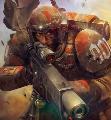 Kanluwen wrote: Kanluwen wrote:
I don't know how anyone else is feeling about the setting or whatnot, but even as a long-time WHFB player it just feels like a big ol' "So what?" to me.
Pretty much this. WHFB is always present in my sphere of tabletop-related interests and these articles are not adding anything to that. They're a whole lot of nothing that seems to be designed mainly to remember people of something they were never in danger of forgetting in the first place.
|
|
|
 |
 |
![[Post New]](/s/i/i.gif) 2023/02/12 21:11:00
Subject: Re:Warhammer The Old World OT chat.
|
 |

Servoarm Flailing Magos
|
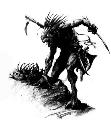 BertBert wrote: BertBert wrote: Kanluwen wrote: Kanluwen wrote:
I don't know how anyone else is feeling about the setting or whatnot, but even as a long-time WHFB player it just feels like a big ol' "So what?" to me.
Pretty much this. WHFB is always present in my sphere of tabletop-related interests and these articles are not adding anything to that. They're a whole lot of nothing that seems to be designed mainly to remember people of something they were never in danger of forgetting in the first place.
With the way they're handling all of it currently i can't shake the feeling that the whole project will end up being a minimum viable product release of a couple of kits for each faction and a handful of books to keep their trademarks and assorted registered designs and other legal protections alive for another decade or so, like that one godawful Fantastic Four movie that only got made not to lose the rights...
|
|
|
 |
 |
![[Post New]](/s/i/i.gif) 2023/02/12 21:24:11
Subject: Warhammer The Old World OT chat.
|
 |

Longtime Dakkanaut
|
Its hard to get too excited before we see some miniatures and some rules.
I think part of the divide is in what people want. Its clear some people want to just pretend the last decade didn't happen, roll out 9th edition WHFB and that's it.
I sort of get that - but I also don't. In some ways I want them to use the fact the slate was wiped clean and create something new - and hopefully better.
So yeah, all the stuff with Khemri prompts a bit of a "so what?" I guess if you are sitting on a big Khemri army its nice to feel like you will be able to use it. But if GW goes "Big Khemri release... new box of skeleton warriors, and all those kits from a generation ago are available again" I'm going to be decidedly un-hyped.
But then I can't really believe Khemri will get anything early on.
|
|
This message was edited 1 time. Last update was at 2023/02/12 21:25:05
|
|
|
 |
 |
![[Post New]](/s/i/i.gif) 2023/02/13 09:49:31
Subject: Warhammer The Old World OT chat.
|
 |

Boom! Leman Russ Commander
|
I gotta say that I am very certain that the rules are going to suck, and that balance is going to be bad. What good might come from this is in new minis that I can use with actual good games, or just for painting up.
|
|
|
|
 |
 |
![[Post New]](/s/i/i.gif) 2023/02/13 12:56:37
Subject: Warhammer The Old World OT chat.
|
 |

Mighty Vampire Count
|
 Illumini wrote: Illumini wrote:I gotta say that I am very certain that the rules are going to suck, and that balance is going to be bad. What good might come from this is in new minis that I can use with actual good games, or just for painting up.
I have pretty much given up on the rules - just interested to see new art and more lore on an era that is low on it.
|
I AM A MARINE PLAYER
"Unimaginably ancient xenos artefact somewhere on the planet, hive fleet poised above our heads, hidden 'stealer broods making an early start....and now a bloody Chaos cult crawling out of the woodwork just in case we were bored. Welcome to my world, Ciaphas."
Inquisitor Amberley Vail, Ordo Xenos 
"I will admit that some Primachs like Russ or Horus could have a chance against an unarmed 12 year old novice but, a full Battle Sister??!! One to one? In close combat? Perhaps three Primarchs fighting together... but just one Primarch?" da001
www.dakkadakka.com/dakkaforum/posts/list/528517.page
A Bloody Road - my Warhammer Fantasy Fiction |
|
|
 |
 |
![[Post New]](/s/i/i.gif) 2023/02/13 14:43:12
Subject: Warhammer The Old World OT chat.
|
 |

Longtime Dakkanaut
|
personally expecting a boxed set, two factions of more recent models and a couple of new character models to help shift it. with a rulebook thats largely 6th/7th edition tidied up but not a lot more - maybe changed to be round bases & movement trays for them (War of the Ring style)
i.e. units of up to about 16-20 for infantry and 5-10 for cavalry being pretty normal
the rulebook to be something you can kill people with, a lot of fluff showing use of copy & paste, old and some new artwork, maybe a bit of terrain in the box alongside two small armies that follow the old pattern of including:
- infantry
- cavalry
- some sort of monster/flier
- a fighty hero
- a magic user
to basically demonstrate the game, armies likely not overly well balanced against each other but looking nice painted up
its not going to be a balanced game, its going to have "more random == more fun" throughout.
but it will be a box, with maybe an army box for each side with some duplicates and a few extras and maybe another character, the game being tested assuming you have both boxes..
then an "armies of.." book that has the stuff they release new and maybe a few more units for the two factions that get released if the thing sells
|
|
|
 |
 |
![[Post New]](/s/i/i.gif) 2023/02/13 15:19:43
Subject: Warhammer The Old World OT chat.
|
 |

Keeper of the Flame
|
They explicitly stated that it will not be around bases
|
www.classichammer.com
For 4-6th WFB, 2-5th 40k, and similar timeframe gaming
Looking for dice from the new AOS boxed set and Dark Imperium on the cheap. Let me know if you can help.
|
|
|
 |
 |
![[Post New]](/s/i/i.gif) 2023/02/13 16:01:07
Subject: Warhammer The Old World OT chat.
|
 |

Fixture of Dakka
|
Tyel wrote:
To an extent I think charging should be fixed as it was rather than be random.
I don't. Games got BORING. Units would march up to just outside charge range and we'd have five turns of the 'charge range dance' with the person who messed up first losing. Not terribly fun, in my opinion.
Add in the VAST number of ways to cheat the system and premeasure without 'actually' premeasuring.... what's the point of guessing aside from handicapping honest players while rewarding cheaters?
|
CHAOS! PANIC! DISORDER!
My job here is done. |
|
|
 |
 |
![[Post New]](/s/i/i.gif) 2023/02/13 16:10:09
Subject: Warhammer The Old World OT chat.
|
 |

Tail-spinning Tomb Blade Pilot
|
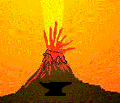 Vulcan wrote: Vulcan wrote:Tyel wrote:
To an extent I think charging should be fixed as it was rather than be random.
I don't. Games got BORING. Units would march up to just outside charge range and we'd have five turns of the 'charge range dance' with the person who messed up first losing. Not terribly fun, in my opinion.
Add in the VAST number of ways to cheat the system and premeasure without 'actually' premeasuring.... what's the point of guessing aside from handicapping honest players while rewarding cheaters?
Amen. And frankly I dont think people who think otherwise really played the game that much. It was boring as crap with non random charges.
On another note I wish the army books keeps a few trans-factional picks. Like goblins and orcs being available in the chaos dwarf list as slaves, giants being a thing in O&G, ogre kingdoms, CD and Chaos warriors list and ditto for trolls. Always liked how this could make you slide slowly into a new faction. Or get suckered in, depending.
|
Let the galaxy burn. |
|
|
 |
 |
![[Post New]](/s/i/i.gif) 2023/02/13 16:16:27
Subject: Warhammer The Old World OT chat.
|
 |

Servoarm Flailing Magos
|
 triplegrim wrote: triplegrim wrote: Vulcan wrote: Vulcan wrote:Tyel wrote:
To an extent I think charging should be fixed as it was rather than be random.
I don't. Games got BORING. Units would march up to just outside charge range and we'd have five turns of the 'charge range dance' with the person who messed up first losing. Not terribly fun, in my opinion.
Add in the VAST number of ways to cheat the system and premeasure without 'actually' premeasuring.... what's the point of guessing aside from handicapping honest players while rewarding cheaters?
Amen. And frankly I dont think people who think otherwise really played the game that much. It was boring as crap with non random charges.
Completely predetermined charge ranges always felt like the odd one out in a system where almost every interaction between elements had at least an element of randomness to it and usually included at least a small chance of failure - or spectacular success. I guess the sensible thing to do would be to have something like movement + D6 for basic infantry, and then use the 'typical' GW design elements like rerolls, roll m pick n, roll n pick highest/lowest, roll n discard lowest etc. to differentiate between units, races, and add utility via spells and magic items. That way, you could still pre-plan 'safe' charges somewhat, but risky charges are a thing and you have a lot of design space to make it a 'classic' GW game with time-proven mechanisms.
|
|
|
 |
 |
![[Post New]](/s/i/i.gif) 2023/02/13 17:21:46
Subject: Warhammer The Old World OT chat.
|
 |

Longtime Dakkanaut
|
yes, yes I know
however until its actually released I'm holding judgement on that, round, or at the very least larger square fit the "modern" model style much better and makes ranking up easier.
also comes down to slightly to GW want models from this usable in AoS and vice-versa Automatically Appended Next Post: the other thing with charge distances being random or not (and note I still thing some random is good but accept others disagree, its just different ways of doing it) is that it can be done without well, better than WHFB managed
part of the issue was the combination with "no premeasuring" which wasn't hard to work around in various ways and is just lazy design
e.g. another game, Flames of War allows pre-measuring, and has fixed charge distances and the charge mechanic works fine, largely because its actually quite hard to position such that an enemy cannot charge you without an actual screening unit of some sort. though there infantry generally all have pretty much the same movement rates
given WHFB allowed a "flee" reaction as well and decent leadership troops would rally easily enough (see the 40k "elite" debate for how that makes better troops actually better by being more flexible) and fixed distances can work - with premeasuring
do think though M+1d6 for infantry, and maybe M+(highest of 2d6) for cavalry is good though, its not certain if you wish to dance at the limit of range, but say M8 cavalry can safely sit at 9" knowing they can charge but infantry coming back is harder
would also allow mounted units to countercharge if they are charged by mounted.
could actually do quite a lot with the basic game system and have it work pretty well. and do so with a hell of a lot more flavour than say Kings of War which can be a better game but the background is nothing really
|
|
This message was edited 1 time. Last update was at 2023/02/13 17:28:27
|
|
|
 |
 |
|
|